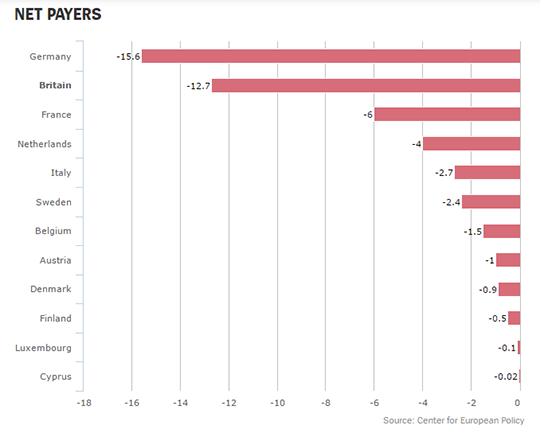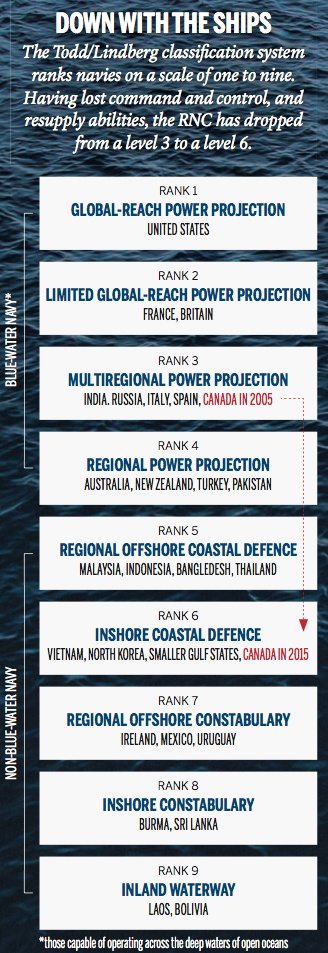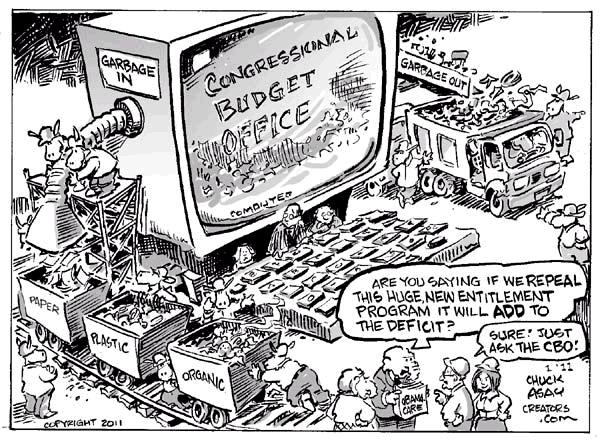That’s Canadian Foreign Affairs Minister Chrystia Freeland with a statement that would cause the late Liberal PM Pierre Trudeau to throw her out of cabinet … because Canada has been relying solely on the US security umbrella since shortly after the elder Trudeau became Prime Minister in 1968. The interesting thing is that the federal government is reportedly going to announce significant new funds for the Canadian Forces in the wake of Donald Trump’s election to the presidency:
Foreign Affairs Minister Chrystia Freeland says Ottawa will forge its own path on the world stage because Canada can no longer rely on Washington for global leadership.
In a major speech setting the stage for Wednesday’s release of a new multibillion-dollar blueprint for the Canadian Armed Forces, Ms. Freeland rejected Donald Trump’s “America First” foreign policy and its dismissal of free trade, global warming and the value of Western alliances in countering Russian adventurism and the Islamic State.
While she did not mention the U.S. President by name, Ms. Freeland expressed deep concern about the desire of many American voters to “shrug off the burden of world leadership.”
[…]
Ms. Freeland said Canada has been able to count on the powerful U.S. military to provide a protective shield since the end of the Second World War, but the United States’ turn inwards requires a new Canadian approach to defend liberal democracies.
“To rely solely on the U.S. security umbrella would make us a client state,” she said. “To put it plainly: Canadian diplomacy and development sometimes require the backing of hard power.”
Giving Canada’s military “hard power” will allow it to meet global challenges, she said, listing North Korea, the civil war in Syria, the Islamic State, Russian aggression in the Ukraine and Baltic states and climate change as major threats to the world order.
“We will make the necessary investments in our military, to not only address years of neglect and underfunding, but also to place the Canadian Armed Forces on a new footing – with new equipment, training, resources and consistent and predictable funding,” she said.
Wednesday’s defence-policy review is expected to lay out the military’s priorities for future overseas deployments, and outline Ottawa’s 20-year plan for spending billions of dollars to upgrade warships and fighter jets, among other things.
Amazing. I didn’t think it would fall to Freeland to announce that we’re planning to stop being freeloaders on the US military…





 This October, NATO is launching Trident Juncture, its largest and most ambitious military exercise in a decade. The massive land, sea and air exercise will be held in the Mediterranean and will include 36,000 troops from 30 nations. Its goal will be to help the fictitious country of Sorotan, “a non-NATO member torn by internal strife and facing an armed threat from an opportunistic neighbour.” Not surprisingly, this is widely seen as an explicit response to Moscow’s increasingly belligerent pressure on the alliances’ eastern borders. The Canadian government, an outspoken critic of Russian President Vladimir Putin and the invasion of Ukraine, had planned to send its flagship destroyer, HMCS Athabaskan, as “a strong signal to the Russians,” whose ships and aircraft have also been bumping up against Canada’s territorial claims in the Arctic.
This October, NATO is launching Trident Juncture, its largest and most ambitious military exercise in a decade. The massive land, sea and air exercise will be held in the Mediterranean and will include 36,000 troops from 30 nations. Its goal will be to help the fictitious country of Sorotan, “a non-NATO member torn by internal strife and facing an armed threat from an opportunistic neighbour.” Not surprisingly, this is widely seen as an explicit response to Moscow’s increasingly belligerent pressure on the alliances’ eastern borders. The Canadian government, an outspoken critic of Russian President Vladimir Putin and the invasion of Ukraine, had planned to send its flagship destroyer, HMCS Athabaskan, as “a strong signal to the Russians,” whose ships and aircraft have also been bumping up against Canada’s territorial claims in the Arctic.



